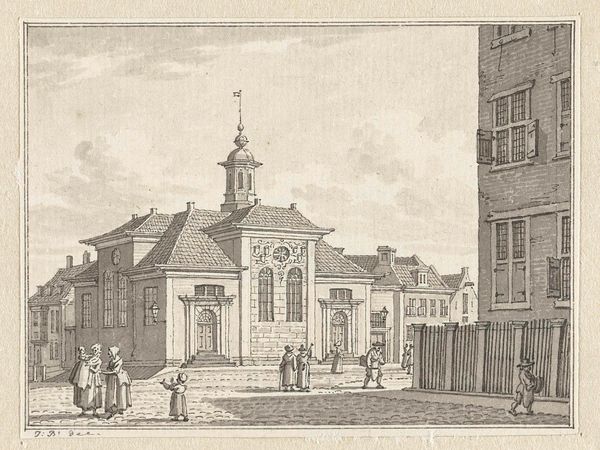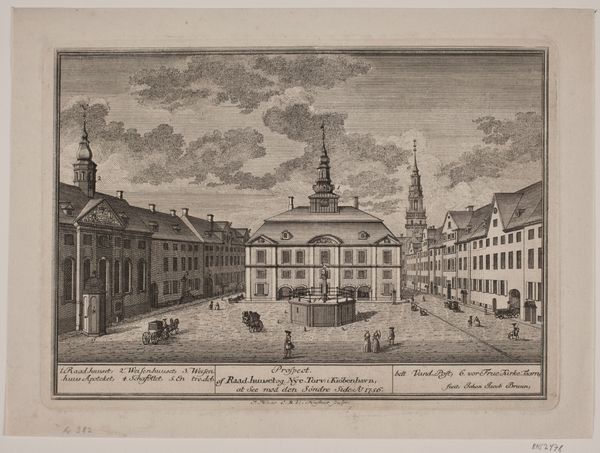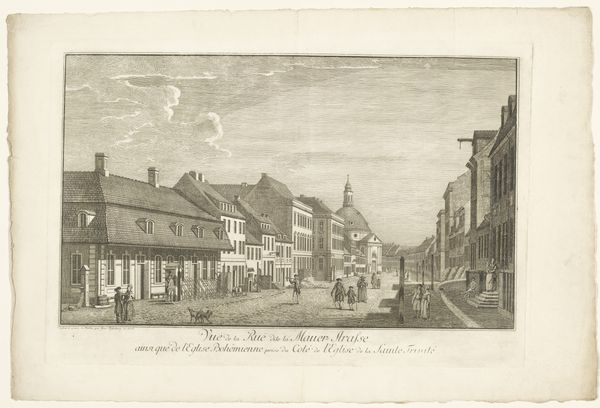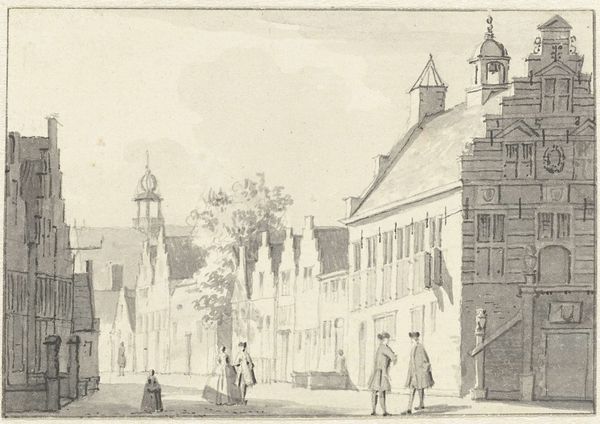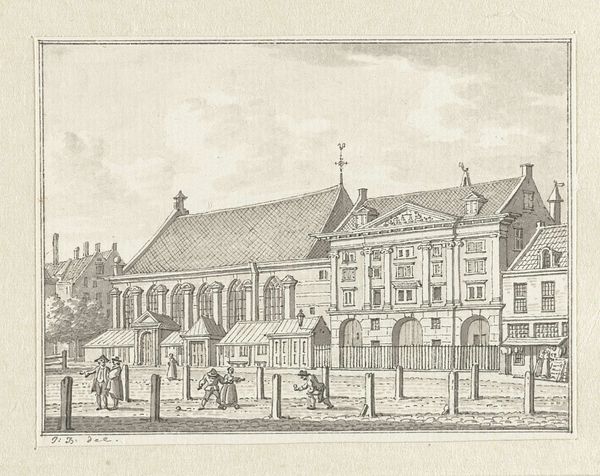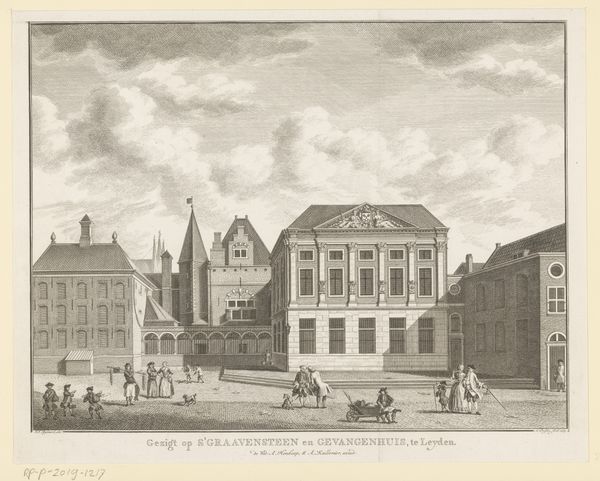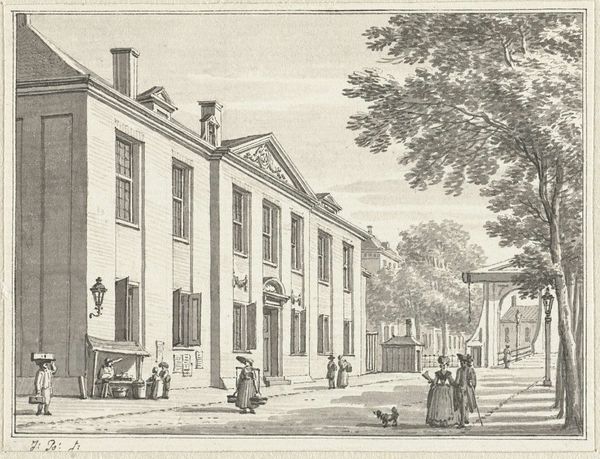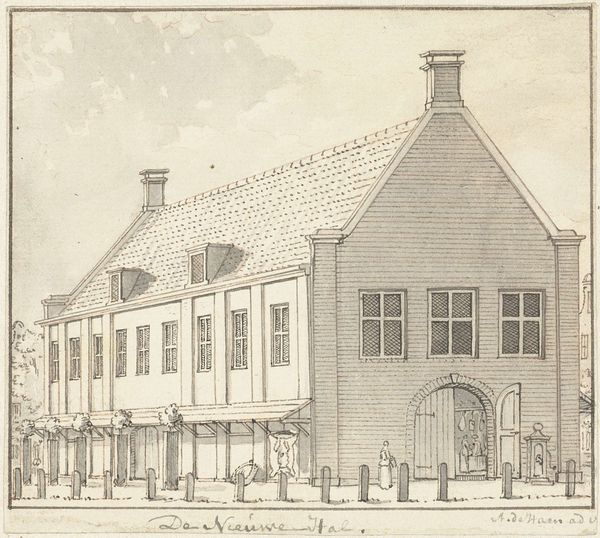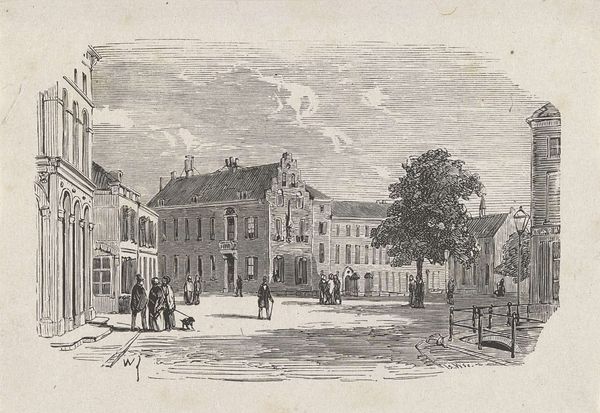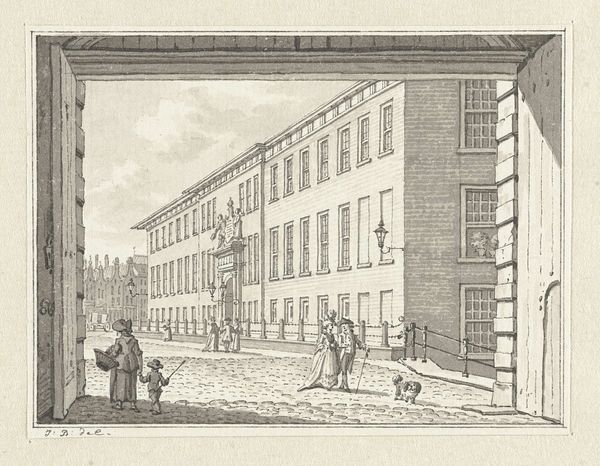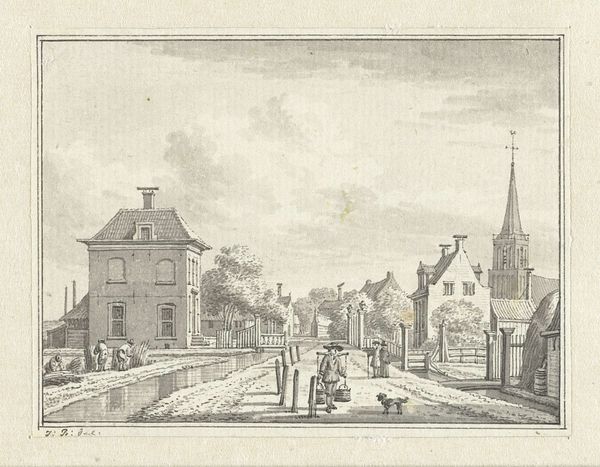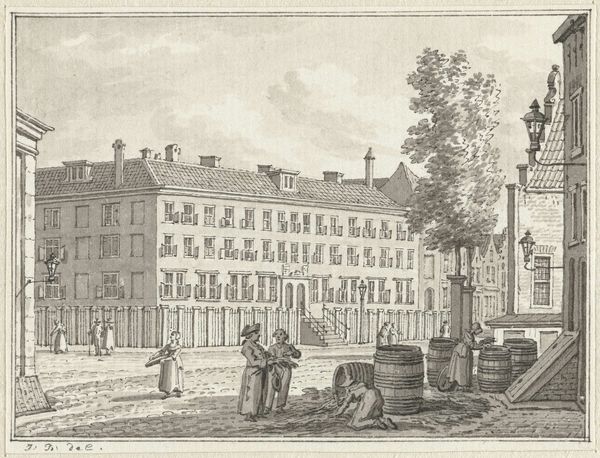
drawing, print, engraving, architecture
#
architectural sketch
#
drawing
#
neoclacissism
#
dutch-golden-age
# print
#
old engraving style
#
landscape
#
cityscape
#
engraving
#
architecture
Dimensions: height 160 mm, width 239 mm
Copyright: Rijks Museum: Open Domain
Curator: Before us is a work by Jan Bulthuis, dating back to 1790. This engraving, a product of the Dutch Golden Age, depicts "Het Dolhuis, Gasthuis en Oudevrouwenhuis te Rotterdam," offering us a glimpse into the city’s architecture and street life of the time. Editor: Ah, the initial impression is stark, almost clinical. The cool greys and meticulous lines give it an air of detached observation, yet there's a palpable stillness. It feels like peering into a bygone era through a lens of almost surgical precision. Curator: Indeed. Bulthuis meticulously renders the architectural facades, employing linear perspective to emphasize depth and order. Notice the pronounced geometry, a testament to Neoclassical ideals. The strategic use of hatching and cross-hatching creates tonal variation, thus defining the forms and textures. Editor: I'm drawn to the figures scattered about – these ordinary citizens going about their day. They inject a welcome dose of humanity amidst the rigid structure. It feels… slightly voyeuristic, doesn't it? Like we are observing life from a remove, safe in our vantage point. Curator: Precisely, the juxtaposition of the human form against the architectural backdrop adds a layer of social commentary. Bulthuis' arrangement invites the viewer to contemplate the relationship between public space, individual experience, and the broader urban environment. Semiotically, the structures might signify institutions of control and order. Editor: Or, perhaps, simply spaces of refuge and community. The 'Dolhuis,' or madhouse, juxtaposed with the old women's home – it’s a poignant reminder of society’s treatment of its most vulnerable members. And in that stillness, there's an undercurrent of untold stories, of lives lived within these walls. It resonates beyond just form, structure, and clever lines. Curator: Well said, the beauty of formal analysis lies in its ability to uncover deeper narratives within seemingly objective representations. Whether social critique or simply a study of architectural form, Bulthuis presents a space for meaningful discourse. Editor: Indeed. It's like a silent play, inviting our interpretations, sparked initially just by the artist's stark lines and subdued tones. I walk away contemplating stories more than styles.
Comments
No comments
Be the first to comment and join the conversation on the ultimate creative platform.
